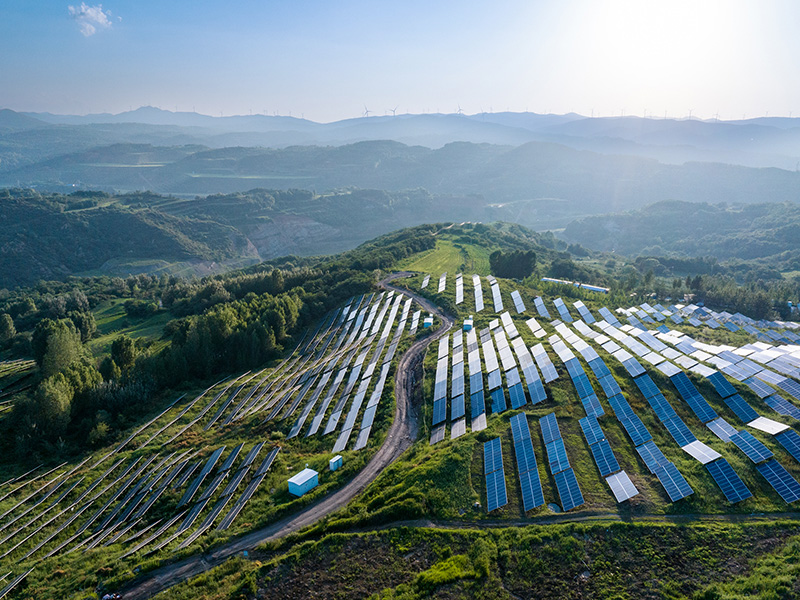
Authors
-
Beth Richmond
Former Director, Transformation, BSR
-
Eva Ehoke
Former Manager, BSR
2020, which for so long seemed like a distant future, is here. As we reflect on the past decade of sustainability goals, we recognize the substantial progress: commitments for financing renewable energy in developing countries have witnessed a tenfold increase since the early 2000s; 600 million more people have connected to the mobile internet since 2015, the majority in low- and middle-income countries; and extreme poverty continues to fall along with child mortality rates. Unfortunately, these encouraging trends ultimately do not create enough momentum to achieve a just and sustainable world. Progress on many of the Sustainable Development Goals (SDGs) has been too slow and, in some cases, continues in the wrong direction: both hunger and greenhouse gas emissions continue to rise.
And now, we are in the decisive decade. As BSR CEO and President Aron Cramer put it in his 2019 annual letter, “[We’re now entering] the decisive decade of the 2020s. The next 10 years will be decisive for business, and for all of us. We will either deliver on the [SDGs] or we won’t. We will peak emissions in line with the Paris Agreement or we won’t. Business will regain public trust or it won’t. We will re-establish social mobility and reduce income inequality or we won’t."
So, how can companies make sure they’re on the right side of history?
In order to achieve the change we seek, it is clear we need business. But the tactics used by businesses to set goals in the past—benchmarking and forecasting—are inadequate. Incremental improvements in sustainability, while still relevant, are no longer enough. We need business to be willing to boldly tackle the complex challenges that society faces by committing to progress, even without a concrete plan. We need moonshots. Increased ambition is not just the way to achieve the SDGs—it’s also the best way to create truly resilient business strategies.
Increased ambition is not just the way to achieve the SDGs—it’s also the best way to create truly resilient business strategies.
In practice, we know that committing to a bold goal is not an easy task, but here are three reasons you should persevere:
- The Ethical Imperative. As we just outlined, society cannot achieve the SDGs without the full participation of business. High-quality employees gravitate toward work with a purpose and companies that they feel make a positive difference in the world.
- The Business Imperative. The climate for business is changing rapidly, and companies that are not proactively helping to shape the new paradigm risk obsolescence. Bold goals help to hedge against risks and spark disruptive innovation. Plus, companies that set innovative goals set the bar for good performance and often receive more support from partners—NGOs, foundations, governments—in attaining their goals than companies that don’t.
- The Stakeholder Imperative. Key stakeholders (employees, customers, investors, local communities) expect bold action. With the proliferation of sustainability data platforms and a rapidly increasing set of corporate “report cards” emerging, it’s more important than ever to take a visible leadership role.
You may be asking yourself: But what if we set this big goal and we fail? The answer is that it’s okay. We have seen time and again that stakeholders—even investors—are more likely to celebrate companies for setting a bold time-bound sustainability goal than penalize them for missing their targets. In fact, in today’s business operating environment, stakeholders are more likely to look askance if you hit a modest sustainability target early than if you miss an ambitious target.
Stakeholders—even investors—are more likely to celebrate companies for setting a bold time-bound sustainability goal than penalize them for missing their targets.
We’ve talked a lot about the why, so now let’s tackle the how. The tools that businesses have used for the past decade are no longer fit for purpose, so how are leading companies going about increasing their ambition?
- They’re focusing on what matters most. The achievement of a bold goal is highly resource-intensive. Therefore, companies should be highly selective in determining where to go big and where to focus on continuous improvement. Big goals should be centered around issues that are highly material and core to the business. Most companies place no more than 10 big bets, with many focusing on just one or two key issues.
- They’re seeing the big picture. A context-based goal is any goal that considers a company’s “fair share” of a societal challenge. For example, science-based goals, such as science-based climate targets, are a subset of context-based goals. Companies are enhancing their understanding of context using science (e.g., context-based water targets), international frameworks (e.g., the SDGs), or good old-fashioned stakeholder engagement. The thing they have in common is that they’re setting goals by determining what needs to be accomplished, not by determining what they think they can achieve.
- They’re starting at the end and working backward. Whereas forecasting starts from the past and extrapolates forward to see where we might end up in the future, backcasting starts with an ideal future state (e.g., achievement of an SDG) and works backwards towards the present to identify what would need to happen to get there. Leading companies are defining the impact they want to achieve and using backcasting to understand the steps needed to get there.
- They’re building holistic approaches based on quantifiable impacts. According to the Impact Management Project (IMP), impact management is the ongoing practice of measuring our risk of negative impacts and our positive impacts so that we can reduce the negative and increase the positive. For example, a company with a bold climate goal should consider all its impacts on climate—from direct emissions, to supply chain emissions, to policy statements, and lobbying activities. The quantification process adds rigor as it necessitates the development of a clear problem statement and theory of change, with a thorough understanding of the different dimensions of possible company impact.
- They’re not letting the perfect be the enemy of the good. Leading companies understand that their goal will not be perfect, but they act anyway with the understanding that they may need to course-correct over the life of the goal as they get new information, as the business changes, and as the operating context evolves. To that end, it can be helpful to pair a set of bold goals with a longer time horizon (e.g., at 10 years) with a set of achievable shorter-term milestones (e.g., three to five years). In addition, business can bring stakeholders on the journey by transparently reporting progress, both the successes and the challenges, at regular intervals. This will then help them understand if you need to make an adjustment to the original goals.
It’s clear that we face a new climate for business—environmental and societal risks have overtaken economic and geopolitical risks in terms of both likelihood and impact in the World Economic Forum’s annual global risk reports. The critical role of business in successfully addressing societal and environmental challenges and the imperative for business to ensure a stable operating environment are increasingly apparent.
The bottom line: go big (but credible) or go home—your business, your stakeholders, and the world will thank you. We look forward to working with businesses committed to a just and sustainable world on setting bold goals for 2030 and beyond. Please feel free to connect with us to learn more.
BSR’s latest sustainability insights and events straight to your inbox.
Topics
Let’s talk about how BSR can help you to transform your business and achieve your sustainability goals.







